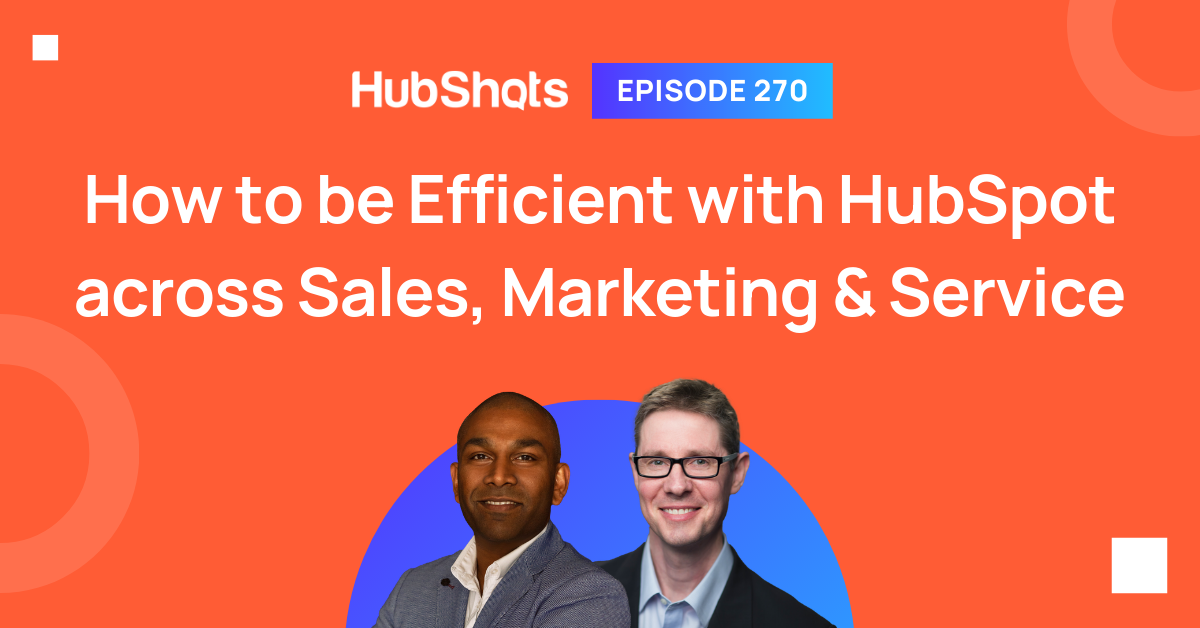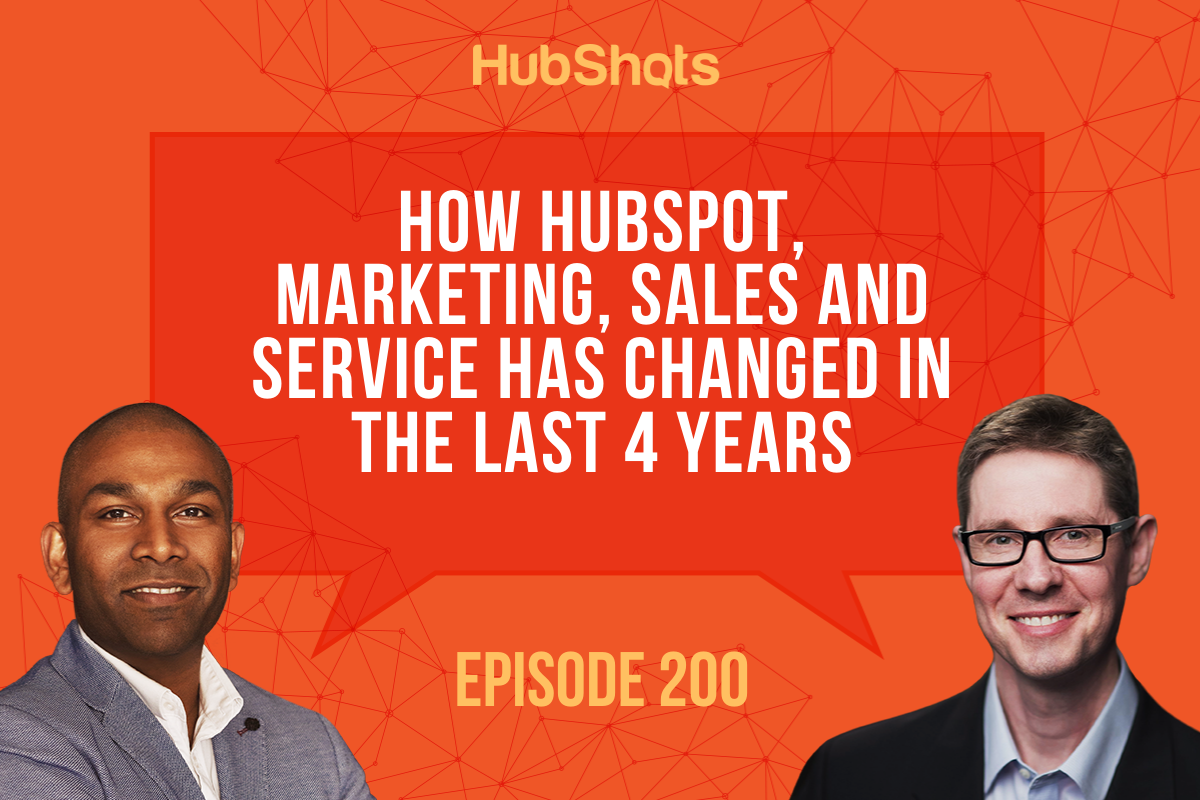HubShots Episode 100: Brian Halligan on Marketing Past, Present and Future
Welcome to Episode 100 of HubShots! Welcome to HubShots, the podcast for marketing managers who use HubSpot hosted by Ian Jacob from Search & Be Found
If you're new to HubSpot, we guide you on where to start, how to do it right, and train you to make the most of the platform.
Review your HubSpot portal to uncover issues, spot growth opportunities, and ensure you're maximising its potential.
Unlock business growth with automation and attribution. Implement best practices and execute marketing campaigns.
HubSpot On-Demand
HubSpot Training
HubSpot Websites
HubSpot Campaigns
HubSpot Optimisation
4 min read
 Craig Bailey
28 June 2017 12:41:44 PM
Craig Bailey
28 June 2017 12:41:44 PM
At last, the 2017 HubSpot State of Inbound Report has been released, and there’s a lot of useful information for marketers and sales professionals to take in. (If you’re interested in checking it out for yourself, you can download all 89 pages here.)
HubSpot gathered data from over 6,000 respondents from all over the globe to create a comprehensive of inbound marketing in 2017. (To give you an idea of how much the project has scaled up, only 4,500 respondents were surveyed in 2016.) Marketing has changed in the decade since inbound first appeared on the scene, but the continuous focus on growth and willingness to experiment remains the same.
If you don’t have the time (or the inclination) to take on the whole report, we’ve plucked a few of the key findings that are particularly pertinent to marketing managers. There is, of course, a great deal of information for sales pros, but that’s a post for another day. Today, we’re focusing on the facts that are relevant only to marketing.
Regardless of region, the top priority for marketers over the next twelve months is converting leads to customers. 73% of marketers in Australia and New Zealand rank lead conversion as most important— in fact, it’s the rated the highest amongst the five regions, beating Asia by 11%.
How do you nurture leads until they convert? Well, one of the most effective methods is targeted content. It can produce an increase in sales opportunities of more than 20%. Targeted content is nothing more complicated than delivering the right content to the right audience at the right time— and while it’s easy to explain, it’s a little more difficult to implement.
It requires an in-depth understanding of your company’s buyer personas, a variety of content types to be sure that you will appeal to your audience’s mood at the moment, and a marketing automation platform set up to assist you in identifying and segmenting your audience so you can target the content toward them.
Another way to improve lead conversion is to increase the "touches" your prospect experiences throughout the sales process. The average customer receives ten marketing touches from the first point of contact until they’ve converted into customers. Unfortunately, roughly half of marketers have incorporated only five touch points during the course of their lead nurturing programme. Adding different forms of content such as blog posts, social media, checklists, or whitepapers to your email campaign will provide additional touch points that will help convert your lead.
When it comes to their inbound marketing projects, EMEA-based marketers prioritise increasing their SEO presence. With Google’s frequent changes to their search results algorithm, it’s becoming increasingly difficult for marketers to stay abreast of the most effective way to improve their SEO strategy.
Google’s focus on mobile-friendly platforms and preference for paid ads has changed the game for many marketers. Diversification of traffic sources as well as utilising keyword research tools to boost keyword strategy are just a few of the methods that are aiding marketers in their quest for better organic SEO, but continuing to produce high-quality, relevant content is the best way to rank.
The priority that’s closest behind increased SEO is blog content creation. As content is the cornerstone of inbound marketing, it’s not surprising that marketers are eager to increase and strengthen their content library. As we mentioned before, excellent content helps websites rank higher on Google, and educational and informative content builds an agency’s reputation as a thought leader, making it easier to convert leads into customers.
Across the board, marketers from all parts of the globe agree on one thing: generating traffic and leads is their biggest challenge in 2017. This issue is particularly challenging for marketers. You’re working hard to create amazing content, but nobody’s around to see it—what’s the point? How do you turn it around to ensure that your site is getting the attention it deserves?
First of all, assess your content. Is it truly top-notch? If the answer to that question isn’t a resounding “YES!” perhaps it’s time to make some changes. Remember, the internet is awash with blogs— what sets yours apart from all the rest? Are you engaging your audience in new and interesting ways, or just regurgitating the same old stuff? Step up your content game, and you might be pleasantly surprised by the results.
Next, consider HOW your customers want to ingest their content. Video is rapidly outpacing the written word in terms of popularity. 43% of people are interested in getting their content via video, while 29% hope to see more blogs. This statistic is even more telling: 55% of people say that they consume video content thoroughly, with 32% skimming the content. 29% consume blog posts thoroughly, while 43% skim. If you want to get your message across in a way that will resonate with visitors to your site, and that is easily sharable and consumable, consider adding video to your arsenal.
The second most pressing challenge was once again universal among marketers: proving the ROI of their marketing activities. Of course, this has been a challenge since the dawn of marketing. You’ve probably been asked to justify the dollars you spend on every marketing campaign you launch, and it’s unlikely that the practise is going anywhere soon.
Proving the effectiveness of your marketing activities is significantly easier when you dedicate resources and time to searching for the links between your marketing activities and sales results. Incorporating marketing software and a CRM (HubSpot offers both) and looping them with a service-level agreement, or SLA, will aid you in discovering exactly how many leads and customers you generate with each specific marketing activity. You’ll know what’s working— and, more importantly, what’s not. It’s much easier to request a budget increase when you can show the powers-that-be the results you’ve achieved with your current budget.
This is only part one of our coverage of the 2017 HubSpot State of Inbound Report— we’ll be delving into the report’s findings on the state of business. Check in to part two to learn more about the marketing industry’s efficacy and what the future holds for marketers.
Welcome to Episode 100 of HubShots! Welcome to HubShots, the podcast for marketing managers who use HubSpot hosted by Ian Jacob from Search & Be Found

HubShots Episode 270: How to be Efficient with HubSpot across Sales, Marketing & Service This edition we dive into:

Welcome to HubShots Episode 200: How HubSpot, Marketing, Sales and Service has changed in the last 4 years This episode, our 200th, we reflect on how...